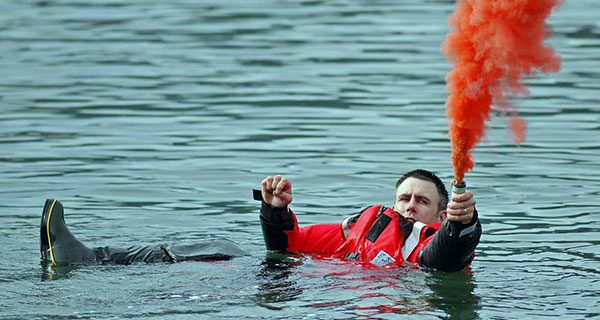
Owning and operating a boat is fun. It’s a great way to get out and enjoy the outdoors, spend time with family, and discover new fishy destinations. It also carries some responsibilities, that are not to be taken lightly. Safety being at the top of the list.
No matter who owns the boat, the person behind the wheel is 100% responsible for the safe operation of the vessel, and 100% responsible for any damage done by the boat OR the boat’s wake. So let that sink in a little bit.
On a beautiful day, when the water is like Teflon and there’s hardly any boat traffic, you can crank her up and just enjoy a pleasant ride. But on busy summer weekends, even the typically calm waters of our regional reservoirs can get churned up like the Gulf of Mexico due to the wakes from 100s of boats. And with no traffic signals or marked highways on the water, it’s crucial that everyone knows and practices navigation Rules of the Road. Never heard of that? You should have. These rules set the procedures to follow when two boats are approaching from opposite directions… when entering or leaving a channel… who has the right of way… and so much more. They are in place to keep our busy lakes, rivers and waterways from becoming even more chaotic.
As the operator of a boat, you are also responsible for carrying certain Coast Guard Required Safety Gear on board. I know, you’ve heard me say this a thousand times. But it’s worth mentioning again. As a matter of fact, I recently had an encounter with a Florida Wildlife Officer who stopped me at a boat ramp for a random vessel inspection.
This officer was extremely professional and polite. We started with checking there were enough PFD’s on board for the number of people we had, and they were properly sized to fit each person… adult or child. Then on the Type IV throwable device. Then fire extinguisher.. (I have two). Then he asked for my registration… check. All good so far. Then, he asked to see my visual distress signals (flares). No problem. And as I was getting them out, I realized I had not checked the expiration date on them for some time. Oh my God! I’m really hoping these had not expired. He looked at them and then showed me the expiration date was two months ago. Suddenly, I was not in compliance. I owned up to the fact that I had not checked them recently, and it was totally my fault. Fortunately, this kind officer didn’t write a citation, but did say he expected me to correct the problem immediately. And I did.
Visual distress signals are something that’s easily overlooked by recreational boaters and anglers… just like me. And that’s especially true for folks who only boat on freshwater lakes. If you are boating on a federally-controlled body of water, regardless of whether it is fresh or salt, you are required to have Coast Guard approved visual distress signals on board, and they must be within the serviceable dates stamped on the flare itself. Flares are not just for offshore saltwater folks. That means if you are boating on lakes like Lanier, Allatoona, Hartwell, Clark Hill, Okeechobee, Kerr and others, you must have visual distress signals on the boat. Quite frankly, if you ask me, you should have them on board regardless of where you are boating.
So stop what you’re doing, walk out to your boat and check that you have the correct, required safety gear on board and check the expiration dates on your flares. While you’re at it, make sure your bilge pump is functional, your battery connections are good (and not corroded), and your navigation lights work properly. Not only will this quick check save you some potential issues with the authorities, but you’ll also have peace of mind knowing you have the right gear on board if you should ever need it.
Tight lines and calm seas, Capt. Cefus and Buck, the Wonder Dog.